The Wireless Industry's Love/Hate Relationship with Unlicensed

Last Tuesday, AT&T put out the above press release. CNN explained the news as follows:
The pilot program will offer free Wi-Fi access to AT&T wireless and broadband customers using smartphones, laptops, and other Wi-Fi enabled devices. AT&T's Wi-Fi network is set up on the north side of Times Square on Seventh Avenue between 45th and 47th Streets.
The program is designed to see how Wi-Fi can help relieve wireless data congestion on AT&T's network. Customers with Wi-Fi-enabled devices will connect to the Wi-Fi network instead of AT&T's 3G network to access the Internet or Web-based applications.
If all goes well, AT&T said it may expand the offering to other cities.
Since Spectrum Policy Task Force days, CTIA has generally been ambivalent to hostile towards making more spectrum available to unlicensed applications. Consider, for example, their 10/23/08 letter to the Commission on the TV Whitespace docket.
At the same time, CTIA recognizes the intense interest in unlicensed TV white space opportunities. Reserving TV white space spectrum for licensed use, allocating some for unlicensed use, and reserving some for future consideration makes sense from a spectrum management perspective.
Where was CTIA in 1981-85 when the rules for Wi-Fi and Bluetooth were created? No doubt they were thinking that these unlicensed rules were of no interest to them. At least they did not oppose them as almost every mainstream spectrum user did at the time. Investment capital does not flow into radio technology unless there is some assurance that the eventual products can get not market and not get block in FCC rulemakings for years.
Also consider this alarmist comment in 2002 from Verizon about the future of unlicensed spectrum:
Even unlicensed devices are likely to be harmed by interference if they continue to proliferate without Commission regulation. Proponents of unlicensed devices support this conclusion as well. ScoreBoard recognizes the challenges and risks in the unlicensed bands from increased interference, noting "interference ultimately drives coverage, capacity, and service quality within a wireless network, and interference will grow proportionally with the increased usage of this finite spectrum resource. It notes that Wi-Fi devices utilize spread spectrum technology to help mitigate interference, but that a technical solution "is not enough by itself. As an example, it points to the deployment of unlicensed Wi-Fi devices in the 2.4 GHz band, and notes that there is a problem with interference in the band "caused by too many unlicensed devices operating within small geographical areas," and "the impact to the users of these devices is a loss or degradation of service. It also notes "individuals and businesses making investments in this unlicensed technology ... need to have reasonable certainty their investment and use will not be unreasonably disturbed by the very real potential chaos of unstructured proliferation.
In the 8 years since this was submitted to FCC, Wi-Fi has evolved from the 802.11b use of “spread spectrum technology to help mitigate interference” to the 802.11g use of OFDM that has no such immunity. (However, the new 802.11n has MIMO/“smart antenna” technology that adds a new type of interference immunity.)
We now see a mainstream CTIA member, AT&T, reaching out to the despised unlicensed technology because the 2G and 3G spectrum they helped create and their own network is unable to meet the demand. AT&T doesn’t seem to worried about “tragedy of the commons” now. It is gratifying that a mainstream carrier now sees unlicensed not as a threat, but as a complement to its own network and an integral part of our infrastructure.
So When are the Comments Actually Due?
On May 20, 2010, the Consumer & Governmental Affairs Bureau of the Federal Communications Commission (Commission) released a Public Notice (Notice) seeking to gather information on the feasibility of instituting usage alerts and cut-off mechanisms similar to those required under the European Union (EU) regulations that would provide wireless voice, text, and data consumers in the United States a way to monitor, on a real-time basis, their usage of a wireless communications service, as well as the various charges they may incur in connection with such usage (e.g., roaming services, voice service “minute plans,” text message plans). Specifically, the Commission sought comment on whether technological or other differences exist that would prevent wireless providers in this country from employing similar usage controls as those now required by the EU.
The Notice was published in the Federal Register on May 20, 2010. Therefore, comments are due on July 6, 2010, and reply comments are due on July 19, 2010. Comments should be filed consistent with the instructions provided in the Notice.
Great! But what about the other umpteen ongoing FCC proceedings? How do we find out their comment dates? The bureaucratic response is to keep searching the Federal Register for the docket number and the due date which relative to the FR publication date- maybe a week after FCC release of the document, maybe a month later. Another way is the regulations.gov website which isn’t mentioned on the FCC homepage. It has many, perhaps all, the comment dates of pending FCC proceedings.
.

However, it does not appear to give reply comment dates directly since reply comments are not required by law and some agencies don’t use them. However, this site does give you access to the Federal Register notice of the docket where you can look for the dates.
At one time OET tried to keep track of the comment dates of its dockets in order to ease the task of the public. But this web page is now way out of date and other parts of FCC never even tried to help the public with this task until FCC/CGAB issued this PN.
So rather than increase the clutter on the FCC homepage with special PNs on topics of special political interest, why not have a general solution to this problem, possibly like a generalization of the OET attempt?
Do the Telecom Policy Agencies Need a "Steven Chu"?

The above item appeared recently on Scott Harris’ Facebook page. Scott worked at FCC under Chairman Hundt as the original Chief, International Bureau. He was one of the finest public servants I have ever worked with, always focusing on the bottom line public interest issues. After leaving FCC he had his own law firm for many years, but now is back in public service as General Counsel of the Department of Energy.
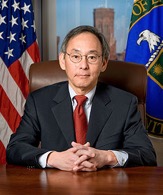
Steven Chu is an American physicist and currently the 12th United States Secretary of Energy. Working at Bell Labs and Stanford University, Chu is known for his research in cooling and trapping of atoms with laser light, which won him the Nobel Prize in Physics in 1997. At the time of his appointment as Energy Secretary, he was a professor of physics and molecular and cellular biology at the University of California, Berkeley and the director of the Lawrence Berkeley National Laboratory, where his research was concerned primarily with the study of biological systems at the single molecule level.
As the interview in The Atlantic shows, he clearly has a hands on understanding of his agency’s technology. Which started me wondering, in the 3 telecom policy agencies, FCC, NTIA, State/CIP why don’t we have at least one person vaguely comparable to Steven Chu as a political appointee since telecom also has many highly technical aspects? I figure there are 5 presidential appointees at FCC, 2 at NTIA, and 1 at State/CIP. In addition there are at least a dozen “noncareer”/political senior appointees between the 3 agencies.
Comm. Sterling
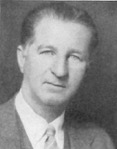
It is not that the current Administration’s appointees are any worse than the past few decades. Indeed, one could argue that Chmn. Genachowski has more high tech business experience than any of his predecessors. But I don’t see any National Academy of Sciences/National Academy of Engineering members or even almost members among all 3 agencies’ twenty or so senior political appointees.
Technical policy is an integral party of telecom policy. Isn’t there room for at least 1 techie among all these political appointees? Secretary Chu shows that techies can be political appointees and succeed. Why limit this to energy policy?
FCC's 14th Wireless Competition Report
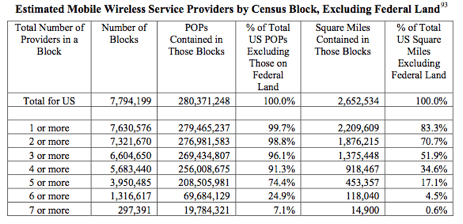
FCC today released the 14th annual Wireless Competition Report required by Congress. (Previous reports are here.) The report differs somewhat from its predecessors:
In this Mobile Wireless Competition Report to Congress (Fourteenth Report or Report), we incorporate several important new forms of analysis that reflect fundamental shifts in the mobile marketplace. For example, whereas previous reports analyzed Commercial Mobile Radio Service (CMRS) competition and discussed a variety of metrics – including number of providers, subscribers, usage, and prices – this Report integrates an analysis of CMRS into an analysis of all mobile wireless services, such as voice, messaging, and broadband. This Report also goes beyond previous reports in reflecting the transformative importance of mobile wireless broadband, which has resulted in a shift from devices that can place traditional phone calls to pocketable devices that can access the entire Internet. Because each of the interrelated segments of the mobile wireless ecosystem has the potential to affect competition, this Report analyzes competition across the entire mobile wireless ecosystem, including, for the first time, in-depth analyses of “upstream” and “downstream” market segments, such as infrastructure and devices.
Weighing in at 237 pages (!) it has a wealth of information on the state of the wireless industry. Here are the key conclusions:
• Maturation of the Mobile Voice Segment. As of the end of 2008, 90 percent of Americans had a mobile wireless device, and Americans used these devices to talk for an average of 709 minutes each month. While usage statistics have generally increased over time, this year marks the first instance of reduced (though still substantial) voice usage, perhaps due to increased reliance on text and multimedia messaging. Voice revenues stayed relatively steady compared to past periods, with average revenue per user (ARPU) slightly decreasing but revenue per minute (RPM) slightly increasing.
• Transition to a Data-Centric Market. Data traffic has grown significantly, due to the increased adoption of smartphones and data consumption per device. Indeed, with overall revenue permobile customer generally remaining flat the past several years, revenue from newer data services is replacing revenue from traditional services.
• Proliferation of Devices and Applications. Handset manufacturers have introduced a growing number of smartphones that provide mobile Internet access and other data services, and use operating systems that provide many of the functionalities of personal computers. The four nationwide providers launched about 67 new smartphones in 2008 and 2009, based upon several different platforms (e.g., Apple iPhone, Android, BlackBerry, Palm, and Windows Mobile). The Android and iPhone platforms have been particularly successful in creating an entire ecosystem of applications and services. As of December 2009, there were over 100,000 applications on the Apple App Store, and 15,000 on the Android Market.
• Continued Industry Concentration. Over the past five years, concentration has increased in the provision of mobile wireless services. The two largest providers, AT&T, Inc. (AT&T) and Verizon Wireless, have 60 percent of both subscribers and revenue, and continue to gain share (accounting for 12.3 million net additions in 2008 and 14.1 million during 2009). The two next- largest providers, T-Mobile USA (T-Mobile) and Sprint Nextel Corp. (Sprint Nextel), had a combined 1.7 million net loss in subscribers during 2008 and gained 827,000 subscribers during 2009. One widely-used measure of industry concentration indicates that concentration has increased 32 percent since 2003 and 6.5 percent in the most recent year for which data is available.
• Robust Capital Investment but Declining Relative to Industry Size. Providers continue to invest significant capital in networks, despite the recent economic downturn. One source reports capital investment at around $25 billion in both 2005 and 2008, while another shows that capital investment declined from around $25 billion to around $20 billion during the same period and that investment during the first half of 2009 was $8.9 billion. Because industry revenue has continued to grow, both sources show that capital investment has declined as a percentage of industry revenue over the same period (from 20 percent to 14 percent).
• Role of Spectrum for Mobile Broadband. Especially as mobile wireless data usage grows, spectrum becomes an increasingly pivotal input. In particular, lower-frequency spectrum possesses superior propagation characteristics that create certain advantages in the provision of mobile wireless broadband service, especially in rural areas. Lower-frequency spectrum potentially allows for a higher quality of coverage with fewer cell sites, when compared to other frequency bands used to provide mobile services. Conversely, higher-frequency spectrum may be effective for increasing capacity, particularly within smaller, more densely-populated geographic areas. Recent auctions reflect that lower frequency bands are more highly valued than higher frequencies. A significant portion of spectrum below 1 GHz is held by the two largest providers: 67 percent of the 700 MHz band, and 91 percent of the Cellular band, based on megahertz-POPs (MHz-POPs).
I was fascinated by the following graph on p. 18 showing the crosselasticity between cellphones and traditional telephony:

One topic that is missing from the report but of growing importance is the asymmetry of traffic flows in commercial wireless services. The report carefully documents the growth of messaging, 1-way video, and Internet use, but makes no statements about the resulting traffic asymmetries. Indeed a search on the word shows that asymmetry is never mentioned in the context of traffic flow. Yet it is a key issue in how to plan future spectrum for such services.
Hopefully the next report will address such issues.
NTIA CSMAC Meeting

Your blogger attended today’s Commerce Spectrum Management Advisory Committee at NTIA. (Oddly, there was an administrative screwup that fouled some peoples’ moods: the Federal Register notice specified a 9:30 start time, while the agenda published just before the meeting stated 9 AM.) Kudos at least to NTIA for quickly getting this committee up and operating. By contrast, FCC asked for nominations for its dormant Technological Advisory Council (TAC) on April 8, 2009 and again on August 31, 2009 and still hasn’t formed the committee. It is now almost 4 years since the TAC held its last meeting on July 20, 2006!
Let me also say how impressed I was that Assistant Secretary Larry Strickling was present for almost the entire meeting. This was an impressive show of interest at the top on spectrum management issues that one rarely sees at FCC.
(During the TAC’s lifetime, the FCC Chairman and commissioners only made cameo appearances at TAC meetings. Disney CTO Bran Ferren resigned from the TAC in 2000 because of the lack of high level interest. He told me that he was on another committee on high tech matters for the SEC and they routinely met with the SEC Chairman. Hence he felt FCC was not then serious about the TAC.)
I didn’t see any FCC staff I recognized other than Julius Knapp who gave a NBP presentation and then left for another meeting. But someone pointed out that WTB staffers were present. There was a presentation on “Radar 101” that had been requested by the committee members by Rick Reaser of Raytheon. Apparently they sought a presentation from NTIA staff on the issue but a squabble within NTIA resulted in a deadlock so a CSMAC member who is active in radar issues gave it. While it was correct in what it said, it oddly left out some key spectrum policy issues:
-Most radars rotate or at least have a rotating highly focused beam.
-Radars need high bandwidth since distance and target velocity resolution increase with signal bandwidth
-Radar wavelength must be small compared to the target size in order to get a significant reflection, thus radars looking for cruise missiles need higher frequencies than those looking for large bombers
It was disappointing that these issues were not included.
A general impression was that the member present generally represent large vested spectrum users, the “haves”, or military industrial complex members out to protect the spectrum of their customers. In the draft subcommittee report on spectrum inventory there was the following text:
“We respectfully suggest that the fundamental precept of redistribution needs to be challenged, and that while an audit may offer small short-term results, it cannot have significant impact on the long-term need for spectrum.”
There was considerable discussion of this sentence at the public meeting and it will be changed in the final version. But it was odd that it made it into the draft distributed at the meeting, perhaps showing how the membership is committed to the status quo.
On the issue of harmful interference, I suspect the membership didn’t want anything to happen that might affect their own interests and seemed again to opt for the status quo. From the draft subcommittee report on interference and dynamic spectrum access chaired by MSTV president David Donovan:
As a general matter, the NTIA, FCC and other spectrum managing agencies have sought to avoid “harmful” interference. Differing terms such as “disruptive interference” or “destructive interference”are sometimes employed. As a legal construct, they all involve the balancing of interests, where the potential service loss is balanced against the benefits of providing a new service. Often this analysis involves an assessment of predictive models based on probabilistic reception and interference analysis...Because of the different policy concerns and definitions of “harmful interference, the subcommittee makes no judgment as to the appropriate legal definition.
Did the subcommittee realize that “harmful interference is more than a quaint phrase, but a legal test that is used in Title III of the Communications Act in five different places? (47 U.S.C. §§301(a)(1), 303(g), 309(j)(16)(C), 337, 922)
As the IEEE-USA letter to NTIA and FCC said, lack of progress on clarifying what is “harmful interference” will probably lead to any spectrum inventory resulting in a large number of harmful interference adjudications as drawn out and difficult as the Northpoint and AWS-3 proceedings. (Recall, that there is no controversy that AWS-3 is vacant, but there is a huge unresolved argument on whether TDD in AWS-3 would result in inevitable harmful interference to the lower adjacent licensee - generally T-Mobile.)
While the draft says that probabilistic models are “often” used, this is actually a major point of contention in AWS-3 and other proceedings. Repeatedly parties have asked that the worst case “minimum coupling loss” model be used. Indeed, NTIA usually argues that this is necessary to protect federal systems. Thus the IEEE-USA letter urges a general statement on when probabilistic models are appropriate.
Finally on the inventory itself, there is little interest in actually measuring federal spectrum use as opposed to sorting existing records. There is no mention in the draft report about “US&P”/nationwide assignments that many federal agencies have. Indeed, FCC has several VHF/UHF mobile US&P assignments from NTIA for its own internal use. Absent some sort of monitoring or an audit by a disinterested party, how does one know which federal assignments are actually used or at least are being held back for some credible contingency?
I will post here the links to the final subcommittee reports when they are published in a week or two.
CEA Takes on NAB and MSTV

The nation's television broadcasters are in a quandary. Their business model depends on the continued inefficient use of hundreds of billions of dollars worth of high-quality wireless spectrum that was loaned to them for free by the American people.
Unfortunately for the broadcasters, the market share of their business has dropped from 100 percent when the government first gave them that valuable property more than 75 years ago to less than 10 percent today. The question that leaves them flummoxed is: how they can possibly defend their continued entitlement to borrowed public property?
Their response: Hire a well-connected former politician as their spokesperson, jam every tried-and-true political hot button and pressure all their Beltway connections in a desperate attempt to preserve the status quo. As for talking points, they claim that if their entitlement is threatened, kids will be deluged with porn, national security will be imperiled and senior citizens will be abandoned.
I am not making any of this up...
Confronted with the inarguable fact that our nation is running out of wireless spectrum and that broadband is a bipartisan national priority, broadcasters are lashing out against proposals to reallocate the nation's spectrum more efficiently. They began by hiring Gordon Smith, a respected ex-Senator, to lead their principal trade association, the National Association of Broadcasters (NAB).
In his first major speech to NAB members, Smith declared war on the Internet. Responding to the spectrum proposals in the FCC's National Broadband Plan, Smith suggested that allocating more spectrum for wireless broadband services would merely enable children to access pornography. "If broadcasting loses spectrum and grandma's new HDTV is rendered useless, at least she will have the consolation of knowing her grandson can get lewd material instantaneously on his cell phone," said Smith. He also suggested that proponents of spectrum reallocation would facilitate successful terrorist attacks by limiting emergency communication. "This matter is one of homeland security," added Smith.
To top it off, he then likened the FCC Chairman, Julius Genachowski, to the "Godfather," saying that the FCC would force each broadcaster to sign up for the spectrum plan by either getting a "signature or his brains on the contract."
Hyperbolic speech is not unique to this issue and in the broadcasters' self-interested view... desperate times call for desperate measures. But when a declining industry monopolizes spectrum that belongs to the American people, and our future competitiveness expressly depends on access to this scarce resource, it is time to take action. Hiding behind sex and national security is simply an attempt to duck a real debate about spectrum and the national interest.
Let's look at the facts--wireless broadband networks are reaching a chokepoint. The FCC reports that we need at least 500 megahertz of spectrum just to keep up with demand for broadband service. The nation's broadcasters use only a portion of the hundreds of megahertz of high-quality spectrum that we let them use for free. Reallocating some of that spectrum for broadband services would allow over-the-air TV to continue while still solving our wireless crisis.
We are in deep trouble as a nation if we can't reallocate a public resource that leaders across the political spectrum agree we desperately need to keep us globally competitive. This is especially true when the business squatting on this spectrum borrowed it without paying taxpayers, and the terms of the loan indicate it is for a limited period of time and subject to the "public interest."
That's the case today with the huge amount of spectrum the television broadcasters hoard even though it is increasingly irrelevant to their business. Nine out of 10 television viewers receive their television through satellite, cable or the Internet. For those television viewers who cannot afford pay service, numerous studies have shown that subsidizing their connection to a "pay" service can be done for a tiny fraction of the money that the reclaimed spectrum would bring at auction. And for broadcasters facing declining market share (TV station revenue has dropped 26 percent since 2005, according to the FCC), the voluntary spectrum auctions proposed by the FCC would provide a revenue windfall - an appropriate market-based incentive to ensure efficient spectrum use.
The 1900s were the era of broadcasting, but this century is the Internet century. We cannot let an old business model hog government property any more than we would have granted horse and buggy makers exclusive use of the public roads after the invention of the car. Our nation needs broadband access for the thousands of new businesses and millions of jobs it will create. Broadcasting is an important part of our past and it has its niche, including new services like mobile TV being driven by innovative equipment manufacturers. But we need to focus on the future and not preserve legacy business models or government grants of monopoly.
We owe it to our children to disregard silly rhetoric about sex, security and seniors and do what is best for our nation. The spectrum proposals in the FCC's National Broadband Plan are a good and long-overdue start.
NTIA NOI on Prison Cell Phone Use
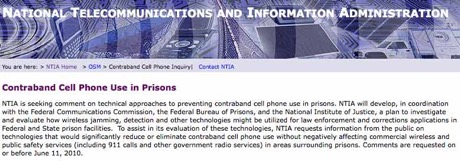
Wednesday’s Federal Register contained an NOI from NTIA entitled “Preventing Contraband Cell Phone Use in Prisons”. FCC has been sitting on without any visible action a related Petition for Rulemaking from 30+ state corrections agencies that was filed on 8/6/09. Oddly, the NTIA NOI never mentions this petition either.
NTIA’s action here come from 12/09 language in the Conference Report to the Department of Commerce FY 2010 Appropriations (p. 619) tasking NTIA, in coordination with the FCC, BOP, and NIJ, to develop a plan to investigate and evaluate how wireless jamming, detection, and other technologies might be utilized for law enforcement and corrections applications.

Footballs modified to serve as carriers for cell phones and thrown over a prison fence
The NOI identified “three categories of contraband cell phone intervention: jamming, managed network access, and detection.”
On jamming, the NOI cites the opposition of CTIA and APCO and says “Stating that it did not have the authority to permit such jamming, the FCC has denied the petitions.” In reality, the whole Commission has never taken any such action or even spoken on the topic. There have been staff actions, such as those cited in the NOI, where the staff indicated a lack of authority and it is pretty clear that no present FCC rule authorizes jamming. But neither NTIA nor CTIA have ever cited an action by the whole Commission that interprets §333 as forbidding the Commission from ever authorizing jamming in a rulemaking. The 8/09 Petition reviews the legislative history of §333 and argues that CTIA’s interpretation in incorrect. While this petition has never been even put on public notice for formal comment, it is on file in Docket 09-30 and the cellular establishment has never publicly addressed it contents - no doubt preferring smoke filled rooms on the Hill and off the record discussion with FCC and NTIA officials (clearly permissible under ex parte rules in this case.)

Packages with cell phones that didn’t make it over the prison fence and got trapped in razor wire
Here are the questions NTIA asks:
Are these characterizations accurate and complete?
Are there technologies other than these categories, and if so, how do they work?
What approaches can be taken to jam within irregular structures such as prisons, within indoor and outdoor areas and within rural versus urban settings?
What specific types of managed access and detection techniques are available?
What risk does each system pose to legitimate cell phone use by the general public outside the prison?
What risk does each system pose to public safety and government use of spectrum?
How can any of the foregoing risks be mitigated or eliminated?
What are the benefits and drawbacks of implementing these techniques?
Are certain systems more suitable for certain prison environments or locations?
To what extent does the installation of each system require a customized approach for each prison?
How disruptive is the installation process?
What approaches can be used in the implementation of systems employing detection techniques?
How does each system provide for completion of critical calls or radio communications such as those from public safety officers (including use of handheld two-way radios) or 911?
What ability does each of these technologies possess for upgrades to include new frequency bands, technologies, modulation techniques, etc. as they are introduced into the marketplace?
How quickly can they be upgraded?
NTIA does not ask about how these systems should be paid for. As your blogger’s client, Soth Carolina Department of Corrections indicate in a 10/09 letter to FCC , approaches like managed access perform functions that both deny service to contraband cellphones and facilitate legitimate calls. Should the cellular carriers therefore pay at least part of the system cost? The letter also points out that managed access will only work if the carriers have an obligation to notify whoever operates them of any pending change to their air interface that could impact their operation and delay implementation until the access system is modified. While AT&T and BOCs had analogous wireline obligations in the 1980s, does the cellular industry want that today?
The NOI states
.The longstanding radio spectrum regulation principle, embodied in the Communications Act of 1934, is to preclude harmful interference and not to block access to or receipt of information transmitted wirelessly. In addition to producing emissions in specific bands and within specific areas to deny service,jamming systems also produce unwanted signals outside of their intended operating bands and are not naturally confined to a prescribed area. These signals have the potential to produce interference to other radio services operating in numerous frequency bands (including Federal Government operations) and outside of the prison facility. (emphasis added)
NTIA - why are jammers different than any other radio transmitter in this respect? Don’t all transmitters produce “unwanted signals outside of their intended operating bands”? Why do other types of systems have emissions that “are confined to a defined area’”, thus going certain distances and then magically stopping? Why won’t the basic framework NTIA itself has adopted to protect GPS systems in §8.3.28 of the NTIA “Red Book” work for cell phones jammers? Do GPS signals have fundamentally different physics?
IEEE-USA Writes to FCC & NTIA on Clarifying Harmful Interference
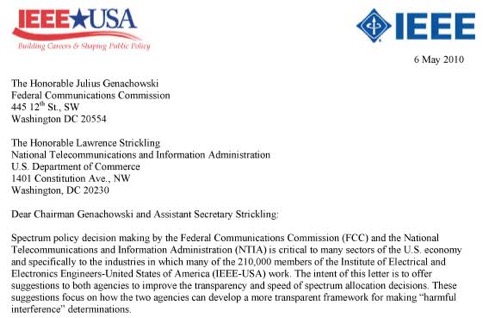
Yesterday, IEEE-USA sent a letter to both FCC and NTIA urging them to work together in clarifying the present definition of “harmful interference”. IEEE-USA is part of the IEEE, the world's largest technical professional society with over 395,000 members in over 160 countries and advances the public good and promotes the careers and public policy interests of more than 210,000 engineers, scientists and allied professionals who are U.S. members of the IEEE. (The above copy of the first paragraph is a link to the whole 4 page document.)
“Harmful interference”/HI is the traditional criterion FCC has used for determining whether interference from anew service to an incumbent service will be tolerable. It is also used 5 times in the Communications Act in a similar way. However, the definition is a 30 word sentence from the ITU Radio Regulations that is ambiguous in many situations. Thus HI determinations have been often been lengthly and expensive to participate in. For example, the Commission has been deliberating more than 4 years on whether TDD use of the AWS-3 band would cause HI to the lower adjacent 3G downlink band.
We have written previously about both the difficultly of defining HI and its importance after the Spectrum Inventory for identifying new spectrum that can be used without causing HI to incumbents. While an unambiguous definition of HI is impractical, any clarification and simplification for the process for making an HI determination will greatly speed up the availability of spectrum for new services and thus speed technical innovation.
Some quotes from the letter:
Uncertainties like this discourage capital formation for new radio technologies. Such uncertainties also affect capital formation for incumbents in determining how much protection they are entitled to from later entrants.
...
ITU-R M.1635 states that “Parts of the assessment procedures need to be based on a statistical methodology, well known as the Monte Carlo technique.” The UK’s national spectrum manager, Ofcom, has also advocated and frequently used statistical technique in spectrum policy decisions.2 Statistical techniques have been used by both FCC and NTIA in authorizing point-to-point fixed links where weather-related propagation losses are time variable3, and by FCC in authorizing broadcast stations because the Grade B contours include a statistical factor.
FCC and NTIA do not have a general policy on the use of statistical techniques in interference prediction even though many of the most contentious issues in recent years have focused on such issues. But no general guidance exists on how to extrapolate to cases involving other propagation phenomenon or mobile stations. Your agencies are in a position to begin to create such guidance.
Anonymous Prepaid Cellphones in the News - Again

Will FCC and Industry Ever Address the Issue?
SpectrumTalk readers may recall that the issue of anonymous prepaid cellphones has been a recurring one. While prepaid operators generally try to obtain user registration information, we have shown that Tracfone gives you the option to “skip this step” and not bother to make up a false name - very convenient to certain demographics. We have also reported that Japan, Greece, and Mexico prohibit anonymous prepaid phones but allow prepaid phones with reasonable documentation. Now let’s add Singapore to the list. During my recent trip there I bought a prepaid SIM for my GSM phone and was subject to a reasonable inquiry of producing my passport so that the name page could be copied.
Prepaid phones are both a profitable business and a useful service in general. But shouldn’t the industry and FCC start asking questions about why anonymous prepaid service is such a good idea? Section 301of the Communications Act requires a license for transmitter use. 47 C.F.R. 22.3(b) says that subscribers can effectively use the operator’s Tittle III license. Should this really apply if the operators have no idea who the subscribers are? Should FCC ask Tracfone how their users could be in compliance with §22.3 if Tracfone has no idea who they are? (A side comment on §22.3: a careful reading shows it is ambiguous whether it applies to all cellular services or just those in Part 22.)
But just banning all prepaid phones is a poor idea because they are especially useful to the lower tiers of society and important for both their safety and to enable access to employment and social services. Any mandatory registration system for prepaid phones has to be flexible enough to balance between legitimate public safety issues and maintaining connectivity for all legitimate users.
But isn’t it time that FCC and industry start a dialogue
on reasonable ways to stop the current flood of anonymous prepaid phones
and their impact on crime and terrorism?
UPDATE
Related story in ars technica
Includes this observation:
The Canadian government funded a study (PDF) on this question back in 2006. A team from Simon Fraser University looked at 24 OECD countries and found that nine of them require mobile operators to collect registration data for prepaid phone users.
"In all cases, the rationale for a prepaid registration requirement was to improve efficiency of law enforcement and national security activities," said the report.
Where Did Wi-Fi and Bluetooth Come From? Part 1
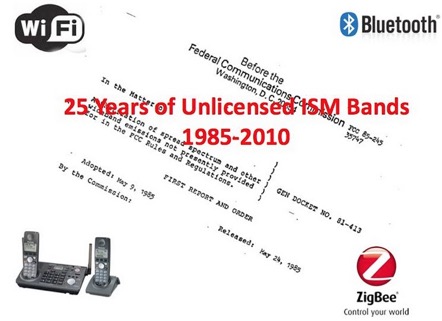
May 9th will be the 25th anniversary of the Report and Order in Docket 81-413 that created the regulatory basis for Wi-Fi, Bluetooth, and a variety of other lesser known products. While many people think it is the origin of unlicensed systems, unlicensed has been allowed since the late 1930s but under restrictive rules that allowed a certain frequencies to be used for narrowly restricted applications in response to industry requests. What set the May 1985 decision apart was the lack of restrictions on use, interference focused technical regulations, and more generous transmitter power than previously allowed.
Your blogger would love to be able to document that in the early 1980s he foresaw the need for wireless LANs and thus planned the rules or this application. In the early 1980s LAN technology was known to techies, Bob Metcalfe was an MIT classmate. But there was no general consensus that LANs would ever be widespread or that RLANs were needed.
As has been said previously, technology moves at “Internet speed” and governments move at “government speed”. Thus it would have been impossible to directly anticipate such a need. Several years later the European Union did anticipate the RLAN need and tried to address it with its GSM-like consensus standards process. The result was HiperLAN which never had much impact.

Central to what I brought to the commission was the idea of continual innovation, new ways to meet practical needs. The need relevant to this discussion concerns the FCC and its then Chairman, Charlie Ferris. Charlie went to the FCC in October 1977. On 23 March 1978 an evolving concept of regulation was formalized in Executive Order 12044, ‘‘Improving Government Regulations.’’ It said the President wished ‘‘Regulations shall be as simple and clear as possible. They shall achieve legislative goals effectively and efficiently. They shall not impose unnecessary burdens on the economy, on individuals, on public or private organizations, or on State and local governments.’’ The Executive Order further instructed regulatory agencies to review existing regulations on the basis of criteria that included ‘‘the continued need for the regulation,’’ and ‘‘the length of time since the regulation had been evaluated or the degree to which technology, economic conditions or other factors have changed in the area affected by the regulation’’.
Former FCC Chairman Ferris

Within a few days I responded with a short list: spread spectrum, millimeter wave, and smart antennas. That turned out to be my ticket out of the military-industrial complex and within 4 months I was on the FCC payroll. Further review of the options lead to the conclusion that spread spectrum should be the initial goal in executing the EO 12044 strategy. We contracted with MITRE Corp., a Pentagon think tank focusing on communications and radar issues, to review the policy options and they produced a thought provoking report. This report raised the issue of spread spectrum in the ISM band for the first time. (It is interesting to note that since 1980 FCC has never contracted for a similar report on technical policy options unless ordered by Congress. In retrospect, the $55,652 spent on that report was probably the best investment FCC had ever made!)
Formal regulatory action was no underway when the Reagan Transition came, but despite all the partisan rhetoric, this type of deregulation was one area where Carter partisans and Reaganites were in agreement.
Thus the FCC under Chmn. Fowler adopted the NOI in Docket 81-413 on June 30, 1981.
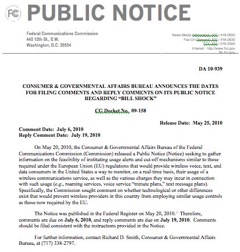
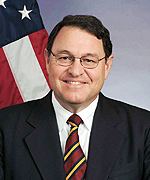




![Validate my RSS feed [Valid RSS]](valid-rss-rogers.png)

